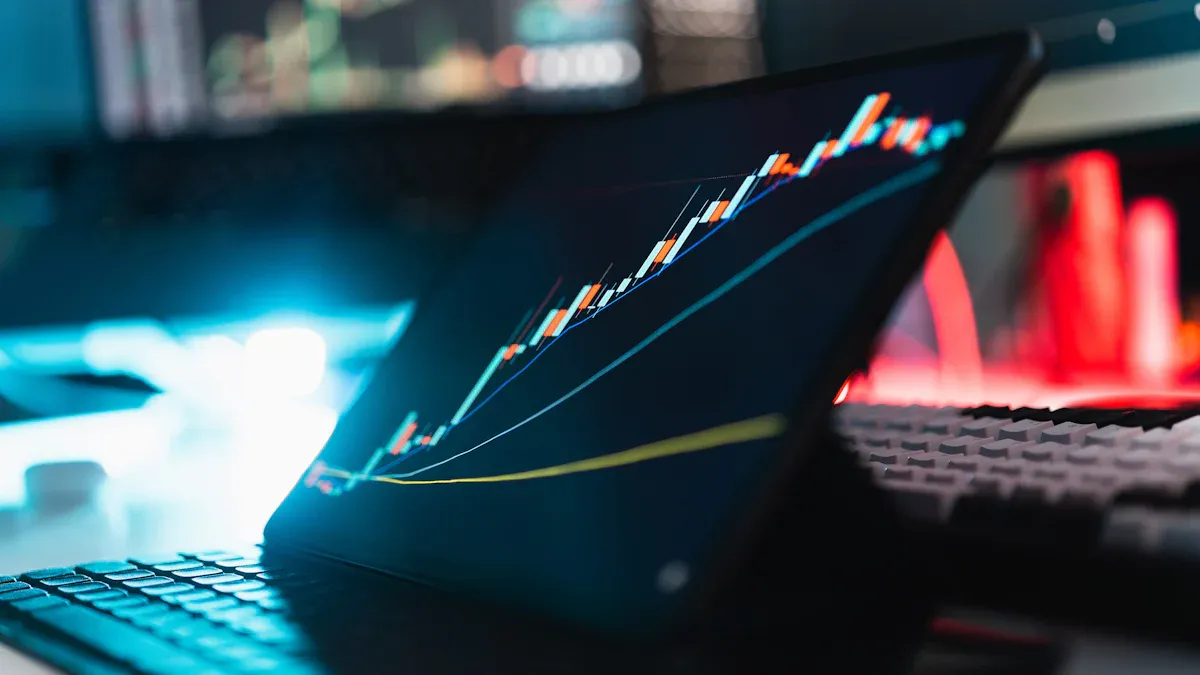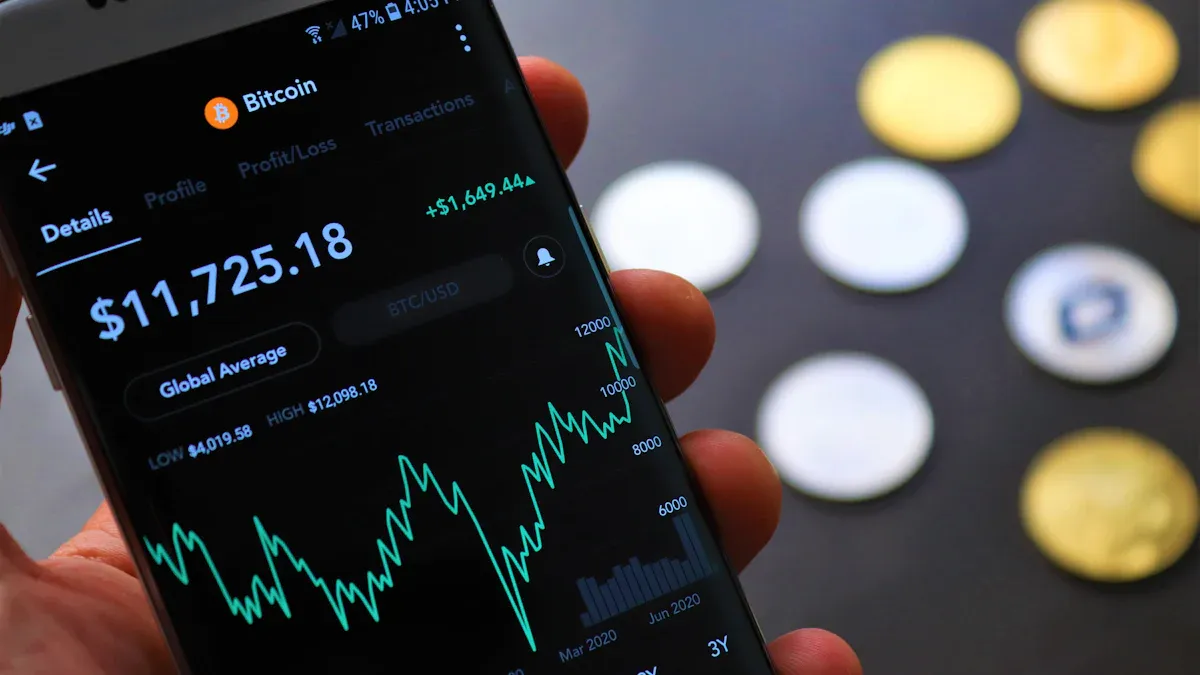What Other Things Can Impact the Value of a Cryptocurrency and Why Should Buyers Be Aware of These Things?
2025-05-07 09:10:43
Cryptocurrency values can fluctuate significantly due to various factors, and buyers should understand what other things can impact the value of a cryptocurrency and why they should be aware of these. Sudden regulatory changes or global crises, for example, can send ripples through the market, creating uncertainty. The European Union's MiCA framework introduced new rules in 2024, but inconsistent regulations across the globe continue to raise concerns for investors. Additionally, natural disasters, such as hurricanes, can heighten market volatility, while ongoing risks like environmental disruptions present long-term challenges. Buyers who overlook these influences may find themselves unprepared for the unpredictable nature of the cryptocurrency market.
Key External Factors That Impact Cryptocurrency Value

Regulatory Changes and Government Policies
Regulatory changes can significantly influence cryptocurrency prices. Governments worldwide are still figuring out how to regulate digital assets, and their decisions often create ripples in the market. For instance, the Basel Committee introduced a 1,250% risk-weight for crypto asset exposures in 2022, which discouraged banks from holding excessive cryptocurrencies. In July 2024, the same committee proposed a disclosure framework for banks, requiring them to reveal their crypto activities. These regulatory crackdowns aim to bring transparency but can also lead to market uncertainty.
Historical data shows that regulatory news often triggers sharp price movements. Positive updates, like the legalization of cryptocurrencies in certain regions, can boost prices, while stricter policies or bans can cause a downtrend. For example, in January 2025, favorable government policies led to a 7% increase in overall crypto market valuations. Bitcoin alone saw a 9% rise, reaching an intramonth high of $109k. However, inconsistent regulations across countries remain a major concern for investors, as they create an unpredictable environment.
Tip: Staying informed about regulatory crackdowns and policy updates can help buyers anticipate potential market shifts and avoid sudden losses.
Market Sentiment and Speculative Behavior
Market sentiment plays a crucial role in shaping cryptocurrency prices. It reflects the collective mood of investors, often influenced by news, social media, and global events. A sudden surge in positive sentiment can drive prices up, while negative sentiment can lead to a downtrend. For instance, when Ethereum announced its transition to proof-of-stake, the market responded with optimism, resulting in a price rally. Conversely, fear-driven sentiment during security breaches or regulatory crackdowns can trigger panic selling.
Speculative behavior further amplifies market volatility. Many investors treat cryptocurrency trading like gambling, driven by hype and short-term gains. Research shows that speculative trading often leads to extreme price fluctuations. For example, social media influencers and market manipulation tactics can create artificial demand, pushing prices to unsustainable levels. Unfortunately, this speculative nature has led to concerns about the long-term stability of the market.
| Evidence | Description |
|---|---|
| Influence of Hype | Social media and influencers can cause extreme price swings. |
| Speculative Nature | Many projects lack fundamental value, leading to substantial losses. |
| Gambling Similarities | Cryptocurrency trading often mirrors gambling behaviors. |
| Behavioral Patterns | Traders with gambling tendencies are more likely to engage in risky trades. |
Note: Understanding how market manipulation and sentiment impact prices can help buyers make more rational decisions and avoid falling victim to hype.
Technological Developments and Network Upgrades
Technological advancements often drive confidence in the cryptocurrency market. Upgrades that improve scalability, security, or usability can attract more investors and boost prices. For example, Ethereum's shift to proof-of-stake and Bitcoin's Taproot upgrade led to increased trading activity and price rallies. Before Ethereum 2.0's rollout, the market saw heightened activity as investors anticipated positive outcomes from the upgrade.
Blockchain adoption by major companies also strengthens market confidence. Mastercard's launch of Crypto Secure in October 2022 is a prime example. By enhancing transaction security, such innovations build trust among users. Studies on Australian banks reveal that blockchain adoption correlates with improved financial performance, further validating its potential. These developments not only improve the technology but also address concerns about security and efficiency.
Tip: Keeping an eye on upcoming technological upgrades can help buyers identify opportunities for growth in the cryptocurrency market.
Macroeconomic Trends and Global Events
Macroeconomic trends and global events play a significant role in shaping cryptocurrency values. These external factors often create ripple effects across the market, influencing investor behavior and cryptocurrency prices. For instance, changes in monetary policy, such as interest rate adjustments by central banks, can directly impact the demand for cryptocurrencies. When the Federal Reserve cuts interest rates, it increases liquidity in the financial system. This often leads to higher borrowing and spending, which can drive investors toward cryptocurrencies like Bitcoin as a hedge against inflation. Historically, periods of rate cuts have coincided with bullish trends in the cryptocurrency market.
Global events, such as the COVID-19 pandemic, have also demonstrated how macroeconomic forces can affect the market. During the pandemic, central banks around the world implemented extraordinary measures, including rate cuts and money printing. These actions created a favorable environment for risk assets like Bitcoin, which surged alongside U.S. stocks. However, as inflation spiked and central banks tightened monetary policy, Bitcoin's value declined, aligning with other growth-sensitive assets. This shift highlights how cryptocurrencies have become intertwined with traditional financial systems.
Here are some key statistics that illustrate the impact of global trends on the cryptocurrency market:
- In 2024, the global cryptocurrency market value exceeded $3 trillion for the first time.
- Bitcoin's market cap alone reached $2 trillion in January 2025, making up more than 50% of the total cryptocurrency market.
- Institutional adoption of Bitcoin grew significantly, with digital assets under management in institutional funds reaching $200 billion by the end of 2024.
Note: Understanding how macroeconomic trends and global events influence the market can help buyers anticipate potential shifts and make more informed decisions.
Security Breaches and Cyberattacks
Security breaches and cyberattacks remain some of the most pressing concerns for cryptocurrency investors. These incidents not only result in financial losses but also erode trust in the market. Hackers often exploit vulnerabilities in exchanges, wallets, or smart contracts, leading to significant disruptions. For example, in February 2025, North Korean hackers stole $1.5 billion in Ethereum from the Dubai-based exchange ByBit. This marked the largest cryptocurrency heist to date and caused widespread panic among investors.
Another notable incident involved zkLend, where attackers exploited a rounding error bug in the smart contract to steal 3,600 Ethereum, valued at $9.5 million at the time. Such breaches highlight the importance of robust security measures in the cryptocurrency ecosystem. Following the ByBit hack, Ethereum's price dropped by over 4% initially, as market speculation suggested the exchange might need to repurchase large amounts of ETH to compensate affected users. This demonstrates how security concerns can trigger a downtrend in cryptocurrency prices.
Here are some additional examples of the financial impact of cyberattacks:
- Attackers exploited a vulnerability in third-party wallet software during a fund transfer at ByBit, laundering at least $160 million within the first 48 hours.
- The DMM Bitcoin hack led to the exchange shutting down in December 2024, transferring assets to another platform and further damaging market sentiment.
Tip: Buyers should prioritize platforms with strong security protocols and stay informed about potential vulnerabilities to protect their investments.
Why Buyers Should Be Aware of Market Volatility

The Unpredictable Nature of Cryptocurrency Prices
Cryptocurrency prices are notoriously unpredictable, often swinging wildly within short periods. This unpredictability stems from the unique characteristics of the market, including its decentralized nature and the absence of traditional stabilizing mechanisms. Quantitative research highlights how extreme price fluctuations are a defining feature of the cryptocurrency market. For example, implied volatility for Bitcoin options tends to spike during uncertain conditions, signaling expectations of significant price movements. Advanced models like GARCH reveal that periods of high volatility often cluster together, meaning that once the market becomes unstable, it’s likely to remain that way for a while.
Historical data further illustrates this unpredictability. Bitcoin has experienced four major drawdowns exceeding 50% since 2014, with the largest averaging an 80% decline. Recovery from these downturns took nearly three years in most cases. These patterns emphasize the need for investor caution, as sudden price shifts can lead to substantial losses. Even during the Acceleration Phase, characterized by high volatility and profit potential, the risks remain significant. Buyers must understand that cryptocurrency prices are influenced by noise and randomness, making forecasting akin to predicting pure chaos.
Tip: Monitoring tools like the Fear and Greed Index can help buyers gauge market sentiment and anticipate potential price swings.
How External Factors Amplify Volatility
External factors often act as catalysts, amplifying the already volatile nature of the cryptocurrency market. Regulatory changes, technological advancements, and global events can all trigger significant volatility in the crypto market. For instance, the SEC lawsuit against Ripple caused XRP’s market cap to plummet, highlighting how regulatory uncertainty can lead to drastic market reactions. Similarly, Tesla’s $1.5 billion investment in Bitcoin drove prices up, showcasing how investor sentiment and demand spikes can create rapid price swings.
Supply and demand dynamics also play a crucial role. Bitcoin’s capped supply structure means that any surge in demand can lead to sharp price increases, followed by equally steep declines. Social media trends further amplify volatility, as public opinion can shift rapidly, influencing prices in the short term. Events like Donald Trump’s tweets attacking cryptocurrencies or Xi Jinping’s pro-blockchain statements have caused sudden price changes, demonstrating the impact of external shocks on market behavior.
| External Factor | Impact on Cryptocurrency Prices |
|---|---|
| Regulatory Uncertainty | New regulations can significantly alter market behavior and correlation patterns. |
| Technological Advancements | Changes in blockchain protocols can affect cryptocurrency movement and market dynamics. |
| Global Economic Conditions | Major economic events can shift investor sentiment and behavior, impacting price fluctuations. |
| External Shocks | Unpredictable events (e.g., pandemics) can cause sudden shifts in market correlations. |
| Social Media Trends | Public opinion can rapidly influence prices, leading to short-term correlation changes. |
Note: Buyers should stay informed about external factors to avoid being caught off guard by sudden market shifts.
Emotional Decision-Making and Its Risks
Emotions often drive decision-making in the cryptocurrency market, leading to risky behaviors that amplify volatility. Studies show that personal values, such as the desire for success or control, heavily influence how individuals engage with cryptocurrencies. This emotional attachment can result in impulsive buying or selling during periods of high volatility, increasing the likelihood of losses.
Market manipulation further exacerbates these risks. Social media sentiment analysis reveals how influencers and public opinion can sway investor behavior, creating artificial demand and unsustainable price levels. On-chain metrics, such as transaction volumes and active addresses, provide insights into how cryptocurrencies are being used, but they also highlight the emotional nature of trading. For example, rising trading volumes during price increases often indicate strong buying pressure driven by fear of missing out (FOMO).
Alert: Emotional trading can lead to a downtrend in the crypto market, as panic selling often follows speculative buying during volatile periods.
How Buyers Can Mitigate Risks in a Volatile Market
Staying Informed About Market Trends and News
Staying informed is one of the most effective ways to navigate the unpredictable cryptocurrency market. Buyers who keep up with the latest trends and news can better anticipate price movements and make smarter decisions. Reliable sources like Cointelegraph and Coindesk provide timely updates on market developments, while platforms like NonFungible.com offer insights into specific sectors like NFTs.
To stay ahead, buyers can adopt practical strategies:
- Regularly consult reputable news outlets for updates on cryptocurrency regulations, technological advancements, and market sentiment.
- Use risk management tools like stop-loss orders to minimize losses during sudden price drops.
- Monitor market analysis reports to identify emerging opportunities and potential risks.
Tip: Bookmark trusted websites and set up alerts for breaking news to ensure you never miss critical updates.
Diversifying Investments to Reduce Exposure
Diversification is key to reducing exposure to the volatile cryptocurrency market. By spreading investments across different assets and sectors, buyers can minimize the impact of adverse price movements. Industry reports recommend several strategies for effective diversification:
| Strategy Type | Description |
|---|---|
| Asset Allocation | Balance investments among Bitcoin, altcoins, and stablecoins to manage risk and reward. |
| Sector Diversification | Invest in various sectors like DeFi, NFTs, and layer 1 protocols to mitigate sector-specific risks. |
| Market Cap Diversification | Include a mix of large-cap, mid-cap, and small-cap cryptocurrencies to balance risk and returns. |
| Investment in Emerging Tech | Explore promising blockchain technologies like Polkadot, Chainlink, and Cosmos for growth potential. |
Spreading risk exposure across these categories helps buyers weather market fluctuations more effectively. For example, stablecoins can act as a buffer during downturns, while emerging technologies offer high growth potential.
Note: Diversification doesn’t eliminate risk entirely, but it significantly reduces the chances of losing everything in a single market crash.
Setting Realistic Goals and Managing Expectations
Setting realistic goals is crucial for managing expectations in the cryptocurrency market. Buyers often get caught up in the hype, expecting quick profits, but the reality is far more complex. The market’s volatility means that prices can swing dramatically, making it essential to approach investments with a long-term perspective.
Buyers should start by defining clear objectives. Are they looking for short-term gains or long-term growth? Once goals are set, they can create a plan that aligns with their risk tolerance and financial situation. For instance, someone with a low risk tolerance might focus on stablecoins and large-cap cryptocurrencies, while a high-risk investor might explore emerging technologies.
Alert: Unrealistic expectations can lead to emotional decision-making, which often results in losses. Staying grounded and focusing on achievable goals can help buyers avoid unnecessary risks.
Cryptocurrency values are influenced by a wide range of external factors, making the market highly volatile. Buyers need to stay informed and cautious to navigate this unpredictable landscape effectively.
Key contributors to volatility include:
- Regulatory changes, which often lead to sudden market fluctuations.
- Macroeconomic trends, like inflation or interest rate shifts, that ripple through the crypto market.
- Environmental concerns, especially for energy-intensive cryptocurrencies, which shape investor sentiment.
Diversification and caution are essential strategies for managing risks in such a volatile market. Investors who spread their assets across different cryptocurrencies and sectors can reduce exposure to widespread selling triggered by negative sentiment. Staying vigilant and monitoring technical indicators also helps buyers make smarter decisions.
By understanding these dynamics, buyers can approach the market with confidence and make strategic investments that align with their goals.
FAQ
What makes cryptocurrency prices so volatile?
Cryptocurrency prices change quickly due to factors like market sentiment, regulatory news, and global events. The lack of centralized control also adds to the unpredictability. Buyers should stay informed and prepared for sudden price swings.
Tip: Use tools like price alerts to track changes and act quickly.
Are cryptocurrencies a safe investment?
Cryptocurrencies carry risks due to their volatility and security concerns. While they offer high returns, buyers must research thoroughly and only invest what they can afford to lose. Diversification can help reduce risks.
Alert: Avoid putting all your money into one cryptocurrency.
How do global events affect cryptocurrency?
Global events, like economic crises or policy changes, can impact cryptocurrency demand. For example, inflation often drives people toward Bitcoin as a hedge. However, negative events can also cause panic selling.
Note: Keep an eye on global news to anticipate market trends.
Can beginners invest in cryptocurrencies?
Yes, beginners can invest, but they should start small and learn the basics first. Understanding wallets, exchanges, and market trends is essential. Beginners should also avoid emotional decisions and focus on long-term goals.
Tip: Use demo accounts to practice trading without risking real money.
How can buyers protect their cryptocurrency investments?
Buyers can protect their investments by using secure wallets, enabling two-factor authentication, and avoiding suspicious links. Choosing reputable exchanges and staying updated on security news also helps.
Alert: Never share your private keys or recovery phrases with anyone.